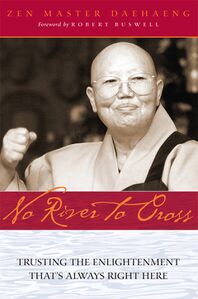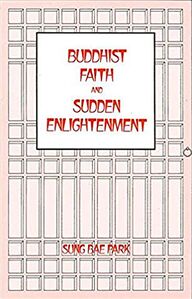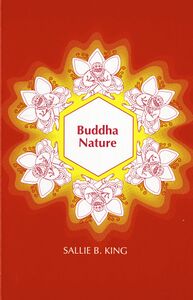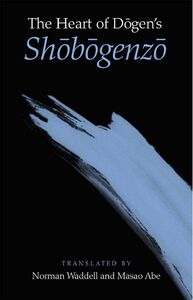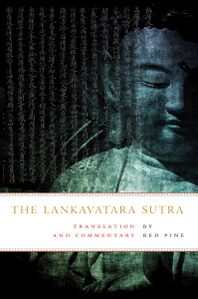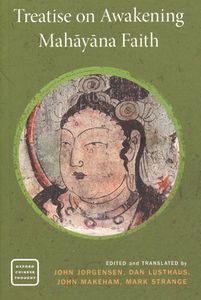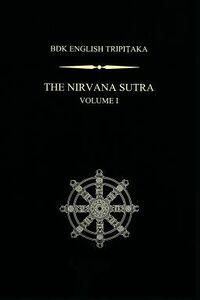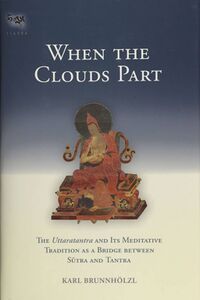Begin Discovering Your Buddha-Nature: Difference between revisions
No edit summary |
No edit summary |
||
| Line 141: | Line 141: | ||
Buddha-Nature in East Asia | |||
Multimedia | |||
<div class="text-80 text-muted position-absolute" style="bottom: 7px; right: 10px;">[[Site Guide|Complete Site Guide]]</div> | |||
</div> | |||
<div class="row m-0 px-lg-5 pt-4"> | |||
{{LocalTile | |||
|classes=col-sm-6 col-lg-6 | |||
|link=Media/Buddha-Nature_—_Episode_22_of_True_Words:_A_Shingon_Buddhist_Podcast | |||
|header=Buddha-Nature by Rev. George Kosho Finch | |||
|image=https://commons.tsadra.org/images-commons/8/84/Finch_Rev._George_Kosho_patheos.jpg | |||
|content=This week's topic is Buddha Nature, in Sanskrit: ''tathāgatagarbha'' (如来藏). All sentient beings are considered to be in possession of the Buddha Nature, the potential to attain enlightenment. | |||
|watermark=Audio | |||
}} | |||
{{LocalTile | |||
|classes=col-sm-6 col-lg-6 | |||
|link=Media/It_Is_Your_Buddha_Nature_That_Sees,_Hears_and_Speaks!―Dharma_Talk_by_Daehaeng_Kun_Sunim | |||
|header=It Is Your Buddha-Nature That Sees, Hears, and Speaks! | |||
|image=https://commons.tsadra.org/images-commons/3/37/Daehaeng_Wikipedia.jpg | |||
|content=Daehaeng Kun Sunim, a Seon (Zen) master and Buddhist nun from Korea, responds to questions about the concept of Juingong (the underlying mind) from an audience member. | |||
|watermark=Video | |||
}} | |||
{{LocalTile | |||
|classes=col-sm-6 col-lg-6 | |||
|link=Media/Trusting_in_Our_Own_Buddha_Nature | |||
|header=Trusting in Our Own Buddha-Nature | |||
|image=https://commons.tsadra.org/images-commons/6/68/Sattizahn_Ed_SFZC.jpg | |||
|content=Rinso Ed Sattizahn gives a dharma talk at San Francisco Zen Center's City Center on the topic of buddha-nature. He touches on selections from Dōgen's ''Genjōkōan'' to illustrate this Buddhist teaching | |||
|watermark=Audio | |||
}} | |||
{{LocalTile | |||
|classes=col-sm-6 col-lg-6 | |||
|link=Media/One's_True_Mind_and_Inherent_Nature_by_Sheng_Yen | |||
|header=One's True Mind and Inherent Nature by Sheng Yen | |||
|image=https://commons.tsadra.org/images-commons/c/c9/ShengYen_Tricycle.jpeg | |||
|content=Our true mind is the pure mind of wisdom free of defilements. Our inherent nature refers to the nature of our being something common, which is also called the Buddha-nature. | |||
|watermark=Video | |||
}} | |||
{{LocalTile | |||
|classes=col-sm-6 col-lg-6 | |||
|link=Articles/Kokyo_Henkel_on_Buddha-Nature | |||
|header=The Cloudless Sky of Buddha-Nature | |||
|image=https://commons.tsadra.org/images-commons/5/56/Henkel_Kokyo_personal_website.jpg | |||
|content=Rev. Kokyo Henkel teaches on "The Cloudless Sky of Buddha Nature" at the San Francisco Zen Center on September 6, 2011. | |||
|watermark=Audio | |||
}} | |||
</div> | |||
</div> | |||
<div class="vienna-gradient pt-5 pb-4"> | |||
<div class="section-header pl-4 pb-2 border-bottom-rightfade">Featured Articles</div> | |||
<div class="row m-0 px-lg-5 pt-4"> | |||
{{LocalTile | |||
|classes=col-sm-6 col-lg-4 | |||
|link=Events | |||
|header=Events | |||
|image=https://commons.tsadra.org/images-commons/thumb/9/97/Vienna_2019_-_Day_2_-_July_17th_-_01.jpg/800px-Vienna_2019_-_Day_2_-_July_17th_-_01.jpg | |||
|content=This page of events related to the Buddha-Nature project includes recordings from scholarly meetings, special interviews and speeches, as well as online events hosted by Tsadra Foundation. | |||
}} | |||
{{LocalTile | |||
|classes=col-sm-6 col-lg-4 | |||
|link=Topic_of_the_week | |||
|header=Topic of the week | |||
|image=https://commons.tsadra.org/images-commons/thumb/a/a2/Pecha-pixabay.jpg/800px-Pecha-pixabay.jpg | |||
|content=Read regular posts from the writer-in-digital-residence, Lopen Dr. Karma Phuntsho. | |||
}} | |||
{{LocalTile | |||
|classes=col-sm-6 col-lg-4 | |||
|link=Buddha-Nature_Event-19_September_2020 | |||
|header=Celebrating Buddha-Nature | |||
|image=https://commons.tsadra.org/images-commons/thumb/5/57/Buddha_Life_Deeds_-_Activity_-_Cropped.jpg/800px-Buddha_Life_Deeds_-_Activity_-_Cropped.jpg | |||
|content=Live Event: Celebrating Buddha-Nature · Join us on Zoom or Facebook live as we celebrate Buddha-Nature teachings. | |||
|watermark=Event | |||
}} | |||
</div> | |||
<div class="section-header mt-5 mb-4 pl-4 pb-2 border-bottom-rightfade">Books</div> | |||
<div class="d-flex justify-content-around flex-wrap"> | |||
{{ExploreBook | |||
|page=Books/No_River_to_Cross | |||
|image=File:No River to Cross-front.jpg | |||
|authorimage=People/Daehaeng | |||
|name=[[People/Daehaeng|Daehaeng]] | |||
|title=No River to Cross | |||
}} | |||
{{ExploreBook | |||
|page=Books/Zen_Mind,_Beginner's_Mind | |||
|authorimage=People/Suzuki,_S. | |||
|name=[[People/Suzuki,_S.|Suzuki]] | |||
|title=Zen Mind, Beginner's Mind | |||
}} | |||
{{ExploreBook | |||
|page=Books/Buddhist_Faith_and_Sudden_Enlightenment | |||
|authorimage=People/Park,_S. | |||
|name=[[People/Park,_S.|Park]] | |||
|title=Buddhist Faith and Sudden Enlightenment | |||
}} | |||
{{ExploreBook | |||
|page=Books/Buddha_Nature_(Sallie_King) | |||
|authorimage=People/King,_S. | |||
|name=[[People/King,_S.|King]] | |||
|title=Buddha Nature | |||
}} | |||
</div> | |||
<div class="section-header mt-5 mb-4 pl-4 pb-2 border-bottom-rightfade">Buddha-Nature in Translation</div> | |||
<div class="d-flex justify-content-around flex-wrap"> | |||
{{ExploreBook | |||
|page=Books/The_Heart_of_Dōgen's_Shōbōgenzō | |||
|image=File:The Heart of Dōgen's Shōbōgenzō-front.jpg | |||
|authorimage=People/Waddell,_N. | |||
|name=[[People/Waddell,_N.|Waddell]] & [[People/Abe,_M.|Abe]] | |||
|title=The Heart of Dōgen's Shōbōgenzō | |||
}} | |||
{{ExploreBook | |||
|page=Books/The_Lankavatara_Sutra:_A_Zen_Text | |||
|image=File:Lankavatara Sutra Translation Commentary-front.jpg | |||
|authorimage=People/Red_Pine | |||
|name=[[People/Red_Pine|Red Pine]] | |||
|title=The Lankavatara Sutra: A Zen Text | |||
}} | |||
{{ExploreBook | |||
|page=Books/Treatise_on_Awakening_Mahāyāna_Faith | |||
|authorimage=People/Lusthaus, D. | |||
|name=[[People/Jorgensen, J.|Jorgensen]] & [[People/Lusthaus, D.|Lusthaus]], et al. | |||
|title=Treatise on Awakening Mahāyāna Faith | |||
}} | |||
{{ExploreBook | |||
|page=Books/The_Nirvana_Sutra_Volume_I | |||
|authorimage=People/Blum,_M. | |||
|name=[[People/Blum,_M.|Blum]] | |||
|title=The Nirvana Sutra, Vol. 1 | |||
}} | |||
</div> | |||
<div class="row"> | <div class="row"> | ||
Revision as of 19:57, 11 December 2020
Buddha-Nature in East Asia
Multimedia
Buddha-Nature in East Asia
Multimedia
The writer-in-digital-residence is the recipient of a grant designed to support Tsadra Foundation’s Buddhist literacy projects that connect the larger public with academic research and advance understanding of specific aspects of Tibetan Buddhist traditions. Writers help to curate this online resource and write essays on the history, philosophy, and practices associated with buddha-nature teachings and tathāgatagarbha theory in Tibet. These essays are addressed to an audience of educated readers of Buddhist materials and Buddhist practitioners.
Lopen (Dr) Karma Phuntsho is one of Bhutan’s leading intellectuals. He has finished monastic training in Bhutan and India before he pursued a M.St in Classical Indian Religions, and D.Phil in Oriental Studies at Balliol College, Oxford. He was a researcher at CNRS, Paris, a Research Associate at Department of Social Anthropology and the Spalding Fellow for Comparative Religion at Clare Hall, Cambridge University, and Research Consultant at University of Virginia. An author of over hundred books and articles including the authoritative History of Bhutan and Mipham’s Dialectics and the Debates on Emptiness, he speaks and writes extensively on Bhutan and Buddhism. Read a complete bio.
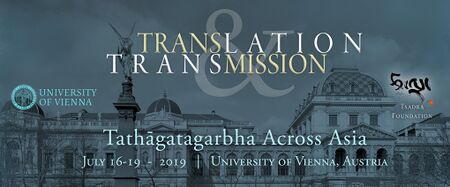
See all presentations
Klaus-Dieter Mathes
Ngawang Jorden
Jacqueline Stone
Ringu Tulku
Tokpa Tulku
The Fourteenth Dalai Lama Tenzin Gyatso
Ringu Tulku
Kirti Tsenshab
Khenpo Sodargye
Orgyen P'huntsok
